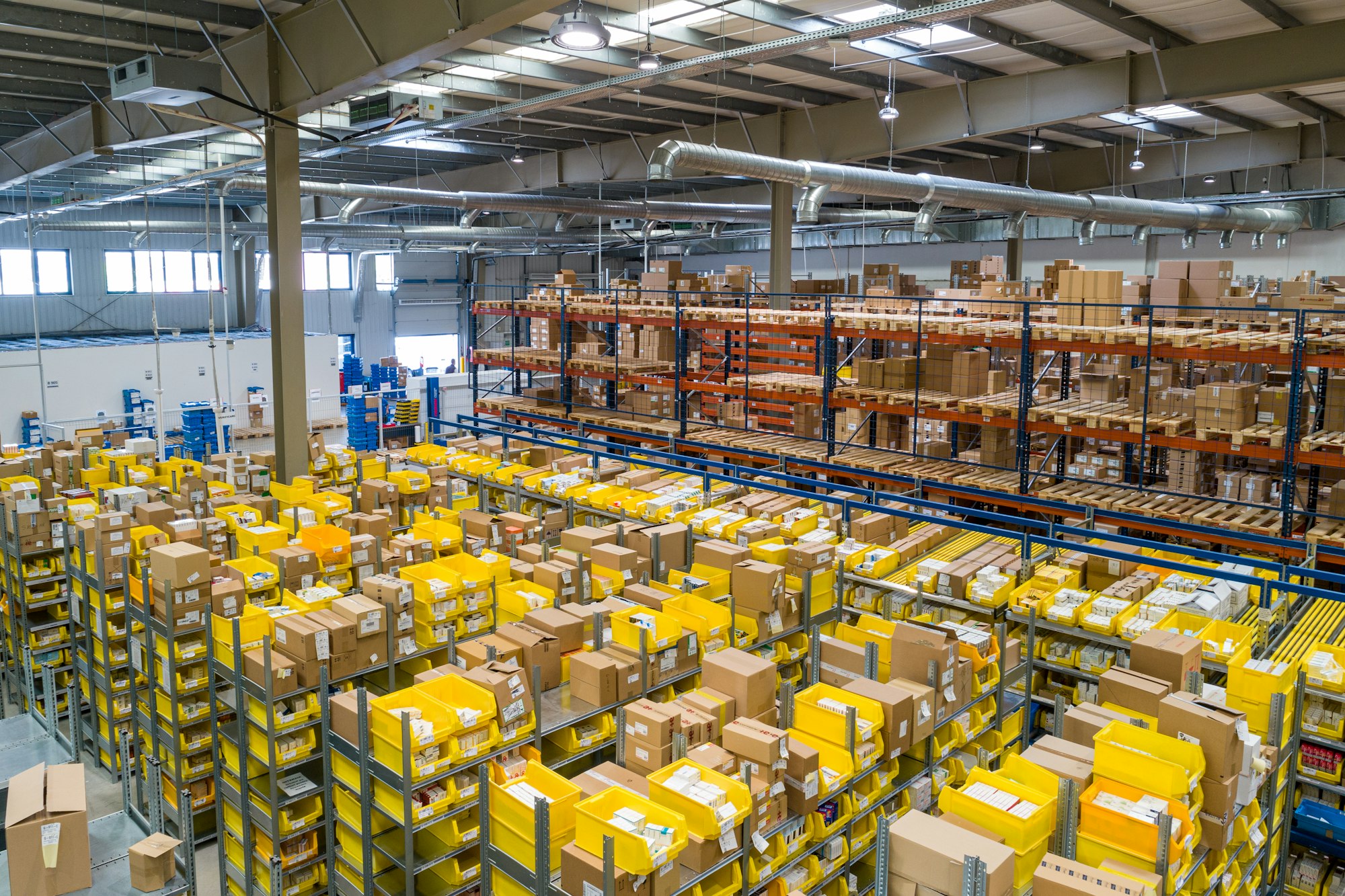How will Order Management Improve your Business?
Over the last couple of years, the way companies perform order management has changed drastically. This is because selling something to a customer and shipping out their product is more complicated than ever before.
If your operation is small enough, you might still be able to fulfil orders to a sufficient degree of accuracy and speed. Which also means that you will still have to do your own quality control and make sure that delivery times don't drag. But as your business grows, you have to seriously consider upgrading to an Order Management System (OMS) to handle your ecommerce-businesses">order fulfilment workflows.

The Problem with Manual Order Management
Some companies get by with manually taking care of their own order processing, creating their own order labels and doing their own paperwork—and then arranging with mail carriers to deliver their wares to the customer. Some companies have special reasons for using a manual system. Their products are handmade or too delicate to ship normally—so their shipping process requires careful handling, packing, and shipping.
But in today's competitive business environment, companies have to optimise their operations to get an edge over the competition. There are several problems with using a traditional, manual order fulfilment system:
- Orders have to be entered manually into the system. Nothing puts a brake on completing customer orders than data entry errors. Which means it will fall upon customer service representatives to redo the paperwork and cancel the wrong order—which can be soul-crushing and demoralising.
- Visibility into orders and inventory is in short supply. When orders are processed manually, they only become trackable once entered into a company's ERP system. When you use a paper system, locating missing orders or getting an accurate order status becomes a chore.
- The system can easily break down. The problem is that the whole system rests on the shoulders of a couple of key staff members. When they go on vacation or leave the company, critical operational information can go missing. At the same time, unless you keep close watch on them, they may push the boundaries of your standard operating procedures and cut corners—which can open the door to compliance issues.

Order Management Software
As your business grows you really need to consider upgrading to a dedicated OMS. In fact, it becomes crucial for a business that processes more than 10 orders a day. There are several excellent software packages to choose from. The bottom line is that you need software to automate many of the tedious order fulfilment processes that have consumed so much of your time.
The goal of using dedicated Order Management Software (OMS) is to make your life easier and your customers happier. This is because an OMS can automate most of the behind-the-scenes activities that kick into gear once a customer places an order, such as managing your inventory.
The OMS will ensure that each order is processed as quickly and efficiently as possible. Which means that the order will be shipped as quickly as possible and with as little hassle as possible—which will prove an immense boon to your overall customer satisfaction. The OMS will take over a lot of the essential back office activities behind fulfilling orders, which will free up more of your time to focus on business growth.

How Will an OMS Improve Your Business?
An OMS allows you to manage orders registered from any of your sales points, and ship out those orders from any of your fulfilment centres. This becomes especially important if you use multiple sales channels—for example a website, phone apps, and third-party retailers.
Here are a couple of ways how an OMS will help you improve your business operations and increase your customer satisfaction:

1. Better Inventory Management
When your OMS is integrated with your inventory management system, your warehouse performance will be improved dramatically. Because the OMS monitors your inventory levels to a high level of accuracy, you will be able to predict stock levels in advance—which means you won't overstock or run out of a particular product.
This will reduce the most common challenges that retailers experience with inventory management: loss of sales due to overselling a product, or running out of stock because of inaccurate sales forecasting.
When your business is connected to several sales channels at once, the OMS will allow you to avoid many of the common problems that arise from manual order processing. You will also be able to sidestep the problems that come from trying to sync disparate, disjointed systems.
The OMS will also allow you to manage inventory in different warehouses or suppliers in one interface. Since your inventory levels are updated automatically, you will be able to anticipate and avoid supply or overstock problems.
In other words, you will be able to automate your supply chain in several ways that can make your company more productive. For example, you could automate the allocation of stock, the generation of unique SKUs, the updating of customer information, the invoicing of orders, keeping shipping methods up to date, and the generation of shipping labels.
It's crucial to have accurate inventory management software that is flexible and is able to adapt as your business grows. If you mismanage inventory, your bottom line will suffer.

2. Multiple Sales Channels
You cannot make the right decisions for your business if you don't have accurate, up-to-date information about what's going on in your business. This is where an OMS comes in. The software can automatically generate real-time analytics which will lead to better decision making.
Furthermore, an OMS makes it a lot simpler to incorporate orders from multiple channels into your operations. The modern consumer expects to get the same service from your company regardless of the sales channel that they use to buy products from you. They expect everything to work seamlessly and effortlessly. They expect your whole business to function as a well-oiled machine.
With an OMS, you are able to get information from all your sales channels about your customers, their orders, as well as the progress made on those orders in one interface. You will also be able to respond to shifts in the market much more quickly and effectively.
Managing orders from multiple sales channels is extremely complex and labour-intensive. An OMS combines the data coming from all your customers, suppliers, and all your inventory stock into a single system. This will make your operations more cost effective and save you time. Which also means that you can free up your team members to focus on other critical tasks.
An OMS will automate order registration, processing, and shipping, giving your customers a consistent experience across all the places where they are able to purchase your products.

3. Faster Delivery Times
After you receive payment from a customer, it becomes crucial to fulfil their order as quickly and accurately as possible. Faster delivery times usually translate into a better customer experience. In fact, most consumers don't want to do business with a retailer again if their previous delivery was late.
A good order management system makes it simple to reduce delays in the fulfilment of orders—and provide better customer service as a result. When you have bulk orders that have to be shipped from multiple fulfilment centres, it's almost impossible for the order not to be delayed if the process isn't automated.
The OMS automates several manual tasks in the picking, packing, and shipping stages of order fulfilment which would normally cause delivery delays. Since so many of the time-consuming tasks in the shipping process are automated, the amount of manual work is reduced—lowering the risk of human error.
Another way that an OMS can reduce shipping times, is that the software will choose the warehouse or order fulfilment centre that's closest to the customer. The software will also automatically send a request to the appropriate warehouse to fulfil the order.

4. Scalable Operations
Although it takes some investment in time and money to implement an OMS in your business, it more than pays for itself in the long term—because it will scale as your business grows.
The OMS is customisable, which means that a business can modify the system as their needs change. You will be able to expand the functionality of the program and its implementation to keep pace with your business's needs.
Many OMS packages run on the cloud, which is instantly scalable. This also allows any type of mobile or internet-enabled device to access the system—which means that you can use any type of hardware to access the software. This also means you don't have to limit your operations to a single location. Different teams in different locations will be able to access your system with ease.

Conclusion
When you start out in the eCommerce field (or you only have to handle relatively low order volumes) you could probably get by with performing your own order fulfilment manually. At this stage of your business, it's probably not worthwhile paying for more comprehensive services or software.
But as your business grows, keeping your standards high and keeping your customers happy will become more and more difficult. At this point, you might want to start looking at using dedicated order management software to help you get all those orders out the door.
With the advent of eCommerce and mobile phones with internet connectivity in every pocket, customers want to be able to buy from you anytime and anywhere. They also demand better and faster service than ever before. Which is why it becomes crucial to upgrade your business operations from using a manual order fulfilment system to an OMS.
OMS software is designed to streamline your entire order fulfilment operation. The software automates the different steps in the order fulfilment chain and integrates them with the rest of your business functions. An OMS will also allow you to scale operations across different online stores and shopping channels. In short, all of your business functions are simplified and improved.